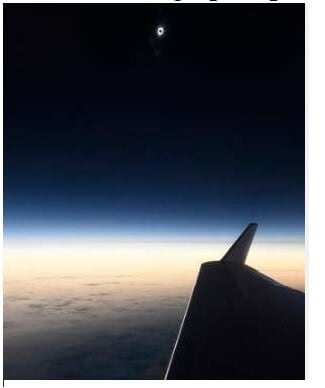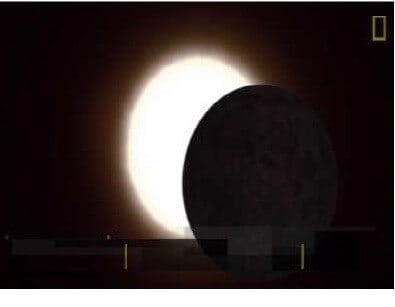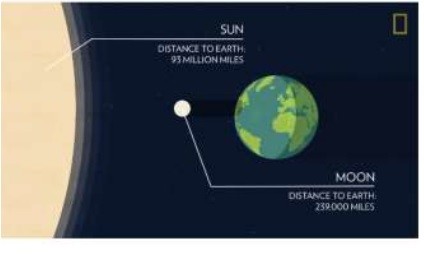English activity, aimed at high school students, with reading and practicing questions about the text “Solar Eclipse”.
This English language activity is available for download in an editable Word template, ready to print in PDF and also the completed activity.
Download this activity from:
SCHOOL: DATE:
PROF: CLASS:
NAME:
National Geographic photographers were across the country—and over the ocean—capturing some of the best views of the historic eclipse.

This photo is one of the first glimpses of the eclipse captured by national geographic photographer babak tafreshi in a jet above the pacific at the moment the eclipse began. Babak is aboard the flight along with two airbnb guests who won the chance to be among the first to witness the solar eclipse before it crosses the us.
Photograph BY BABAK TAFRESHI
By Alexa Keefe
PUBLISHED AUGUST 21, 2017
The “Great American Eclipse”on August 21, 2017 was the first total solar eclipse the United States had 
www.nationalgeographic.com
1) What is the theme covered in the text?
A:
2) A possible translation for the news subtitle: “National Geographic photographers were across the country—and over the ocean—capturing some of the best views of the historic eclipse” would be:
a) National Geographic photographers were across the country – and over the ocean – capturing some of the best views of the historic eclipse.
b) National Geographic magazine was all over the country, including over the ocean capturing photos of the lunar eclipse.
c) National Geographic magazine was all over the country, including over the ocean capturing photos of the solar eclipse.
d) National Geographic magazine sent its best photographers to the ocean to capture the solar eclipse.
3) According to the text:
a) The “Great American Eclipse” on August 21, 2017 was the first total solar eclipse the United States has seen in 38 years.
b) The “Great American Eclipse” on August 21, 2017 was the second total solar eclipse the United States has seen in 38 years.
c) The “Great American Eclipse” on August 21, 2017 was the third total solar eclipse the United States has seen in 38 years.
d) The “Great American Eclipse” on August 21, 2017 was the fourth total solar eclipse the United States has seen in 38 years.
4) According to the text so that everyone could view the eclipse without losing any details:
a) National Geographic Magazine provided more than a dozen photographers to be strategically positioned along the path of the eclipse.
b) National Geographic Magazine has made available more than a dozen photographers to be strategically positioned along the path of the eclipse.
c) National Geographic Magazine has made available more than a dozen digital cameras to be strategically positioned along the path of the eclipse.
d) National Geographic Magazine has made available more than half a dozen digital camcorders to be strategically positioned along the path of the eclipse.
5) According to the text where would the eclipse start and where would it end?
A:
6) Read:

What is the similarity between the text and the image on the side? Explain.
By Rosiane Fernandes Silva- Graduated in Letters
At answers are in the link above the header.
 report this ad
report this ad